Enlarge
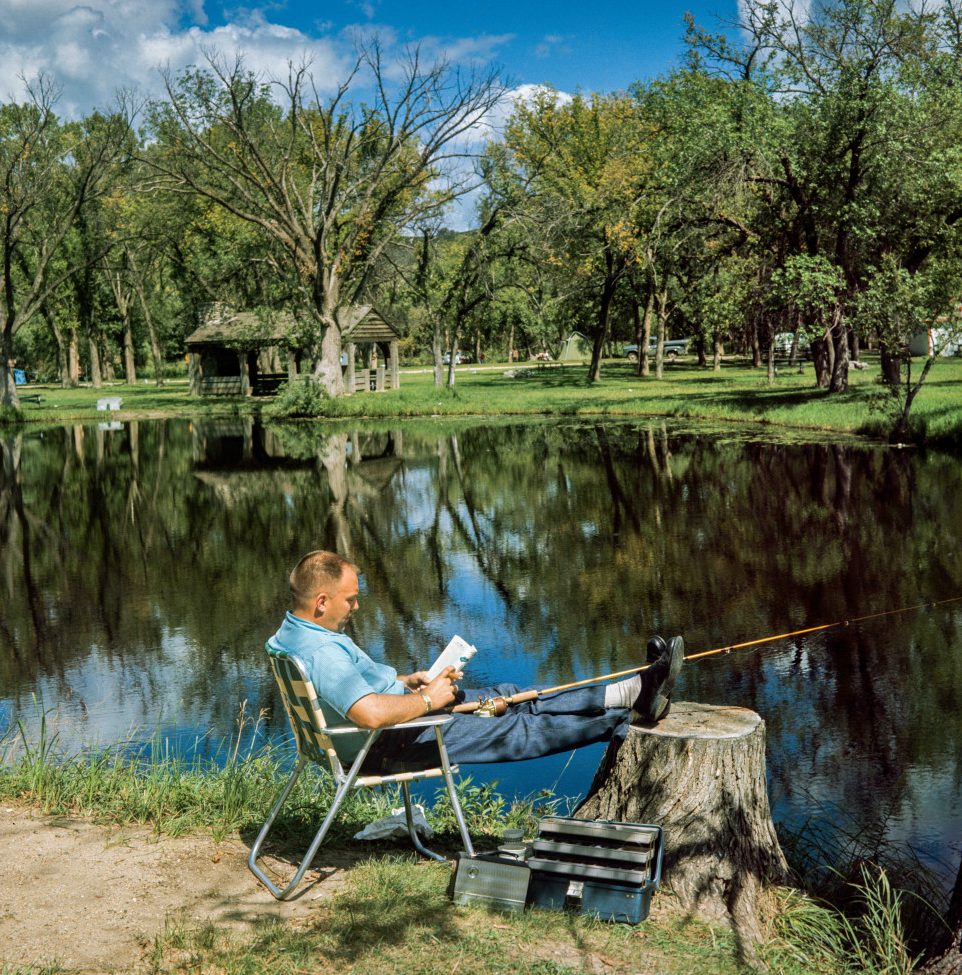
Photo by Lou Ell, Nebraskaland Magazine
By Eric Fowler
Coulda, coulda, shoulda.
Our lives can be full of them.
The story of one of mine began in 1999, the first time I visited Niobrara State Park. From the hilltop overlooking the Niobrara River, I could see a rooftop poking out of the trees in the riverbottom.
I was told it was the picnic shelter in the old park, the one that opened in 1935 and was closed when the park moved to its current location in 1987. I told myself I’d hike out and see it someday, and said the same thing every other time I saw the shelter, be it from that hilltop or from the window of a Cessna on an aerial photo assignment.
Someday.
The story of Niobrara Island State Park began in 1889, when citizens of Niobrara who settled in 1856 successfully petitioned Congress to set aside a tract of land on the west side of the Niobrara River for a park. The small stream on the west side of the tract is what put “island” in the park’s name. The origin of that stream is unclear. Some reports say Mormons who settled there in 1846 or ’47 dug it, diverting water from the Niobrara River to power a mill. Others say it was just a small side channel of the Niobrara. Whatever the case, it remains known as the Mormon Canal today.
A clubhouse was built, but interest in the park waned, and in 1930, residents of the village voted to donate the land to the Nebraska Game, Forestation and Parks Commission, the precursor to Nebraska Game and Parks. Picnic grounds and a 9-hole golf course were built, and fish were stocked in the ponds. “Where the sky is blue and the earth is wide and there’s lots of fish by the riverside” read a headline atop a story on improvements being made at the park in the Niobrara Tribune in 1933.
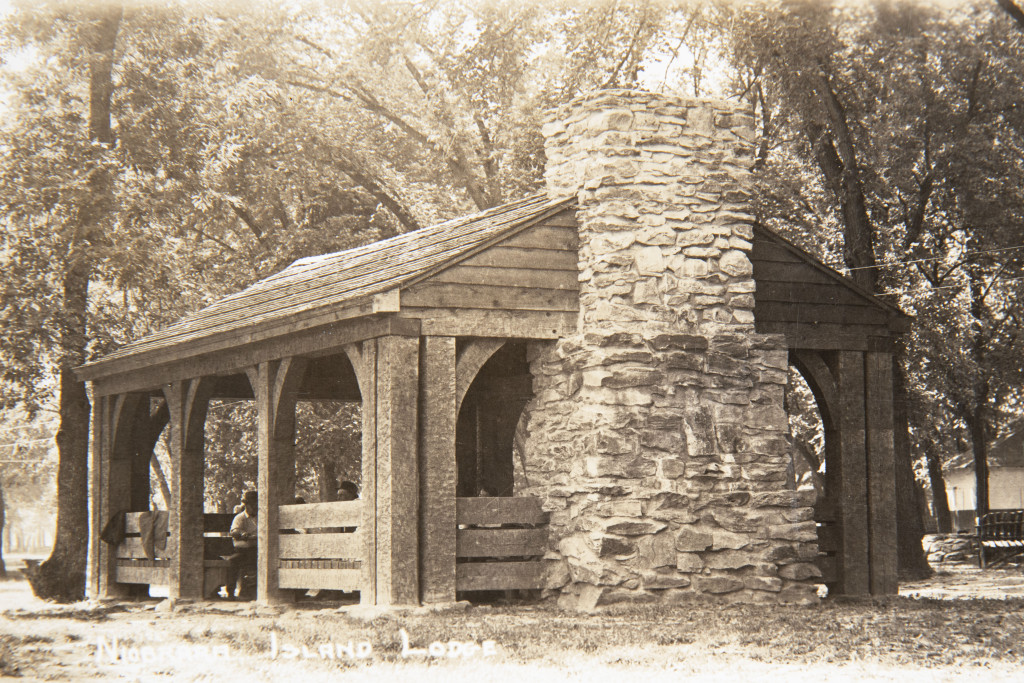
The Great Depression had already begun, however. With so many people out of work, President Franklin Delano Roosevelt in 1933, as part of his New Deal, created the Civilian Conservation Corps. The work relief program put nearly 3 million men to work during the nine years it existed. Among the many jobs they undertook was the construction of 700 new state parks and roads, trails and shelters at others.
In 1934 and 1935, men from a CCC work camp in Niobrara built cabins, roads and other amenities at the park, including the picnic shelter. It was built with massive, hand-hewn wood posts and beams tied together with curved knee braces, and a stone fireplace at one end. It differed from shelters CCC crews built at Ponca and Chadron state parks and Dead Timber, Walgren Lake and the Wildcat Hills state recreation areas, iconic stone structures that still stand today.
Now known simply as Niobrara State Park, the park opened in 1935. An advertisement in Outdoor Nebraska, the precursor to this magazine, in 1936 dubbed the park “A rest haven in pleasant surroundings.” A 1944 article in Outdoor Nebraska said it was built upon a beautiful wooded island of 800 acres, as “[g]listening white cottages, group camps, administrative buildings dot the entire area.”\
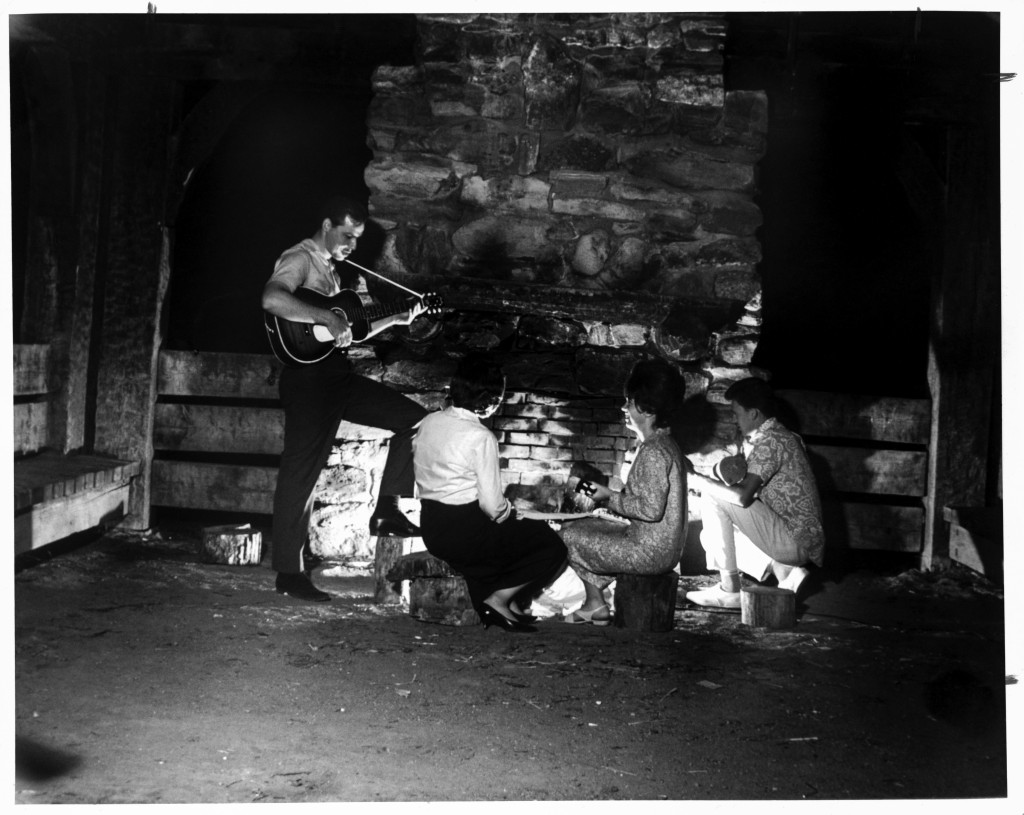
The park’s new picnic shelter stood on the banks of the lagoon that wound through the park, where visitors could rent paddleboats, fish and swim. It hosted countless picnics and events.
“Oh yeah. We had picnics there when school got out. And we always had a school picnic,” said 92-year-old Delberta Peterson, a long-time resident of Niobrara, who had memories of Easter sunrise services, local ladies cooking meals for church camps, long walks, riding paddleboats on the lagoon and the log cabin store at the old park.
“All the kids thought it was wonderful,” said Marge Rotherham, whose husband, Vince, was superintendent at the park. They had four children together there. “When it rained, it protected them. They quickly went to the shelter.”
“I remember a birthday party there … and catching a baby duck that my mom made me let go,” said Dina Barta of Lincoln, a Niobrara native and Game and Parks conservation officer who spent her summers at the park growing up. She also remembers the store, bringing her pet squirrel there for visitors to see, selling sweet corn from her pink banana-seat bike, and visitors signing or carving their names in the log beams.
Village residents loved the park. “It was a way of life for all of us,” Barta said. “The park made the town.”
Flooding on the Missouri and Niobrara rivers was a recurring problem for the village and Niobrara State Park. It forced the town to move in 1881. Another flood, this one moving much slower, began when Gavins Point Dam was completed on the Missouri 32 miles downriver from Niobrara in 1956.
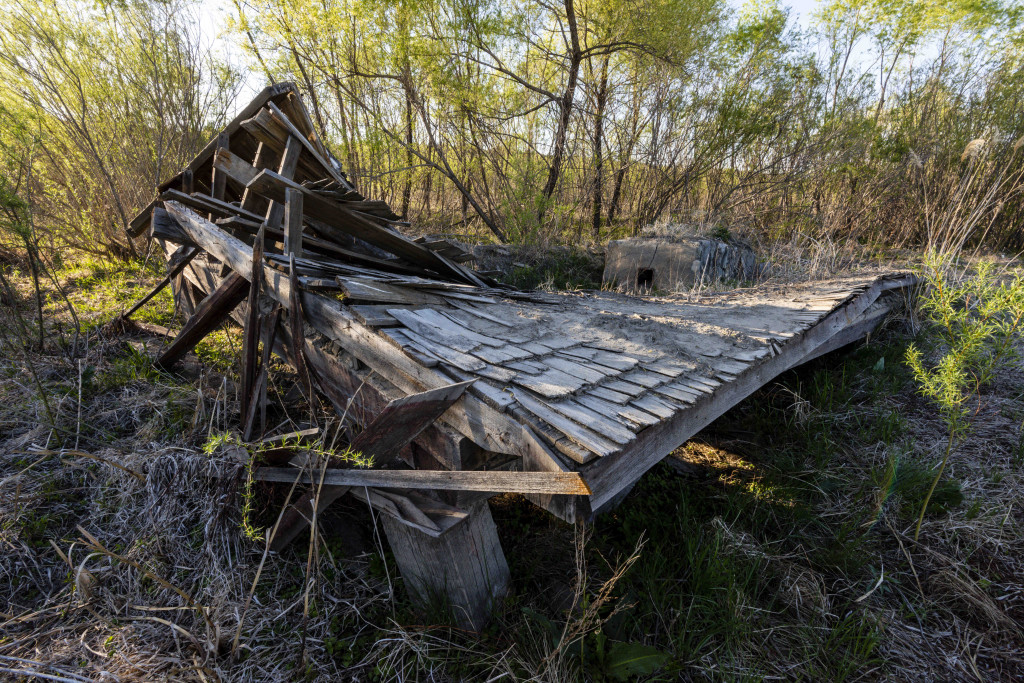
With the Missouri’s water slowed, the sand carried by the Niobrara began to settle out in both rivers. And with high spring flows erased by Fort Randall Dam and others upstream, it stayed, forming a delta, raising the water table and flooding basements in the village. In the mid-1970s, the town was relocated to the bluff above the rivers. The park remained on the riverbottom for a few more years, but sedimentation, shifting river channels and the increased risk of flooding would force its move to the hills west of the Niobrara in 1987.
From those hills, the old park’s structures remained visible for years. The cabins, store and paddleboats stayed open for a year or two. Some of the buildings were relocated, including a few of the cabins, which found a new home at the Blue Moon Resort near Verdel. More flooding in 1996 took its toll on the rest, which were eventually demolished. That flood shifted most of the Niobrara’s flow into the Mormon Canal and filled the lagoon and pool with sand. Slowly, signs of the old park were erased. Eventually, the shelter, the last relic of the old park, was hidden from view by willows and cottonwoods.
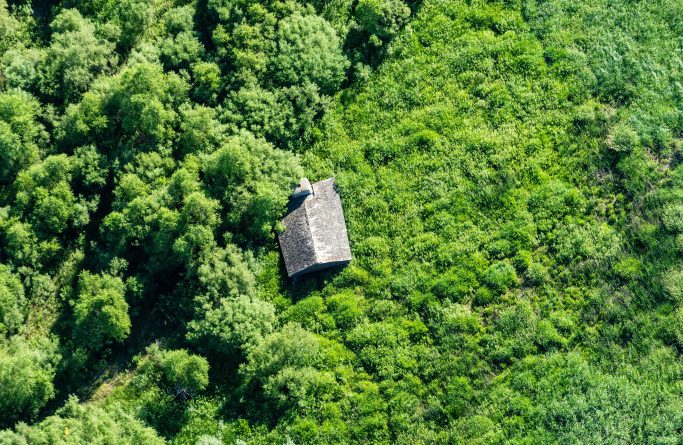
And then 2019 happened. March rains quickly melted thick snowpack and swelled the frozen Niobrara River, sending massive blocks of ice downstream. Spencer Dam breached, sending a wall of ice and water downriver, washing out Highway 12 between Niobrara and the park, and the old railroad bridge that served as a trail. Water likely topped the roof of the shelter by a few feet, and had trees on the island not deflected the ice, it surely would’ve been swept away. When the water receded, the roof, covered with sand, collapsed. That is what I saw from the air in 2019 while documenting the damage caused by the flood.
I had waited too long.
My “someday” finally came in May of 2021. With nothing pressing on the schedule, and the peak of mosquito and tick season still ahead, I headed for the park and bushwhacked my way across what is now Bazile Creek Wildlife Management Area from the highway to the shelter. I found sand piled nearly to the rafters, and the fireplace toppled.
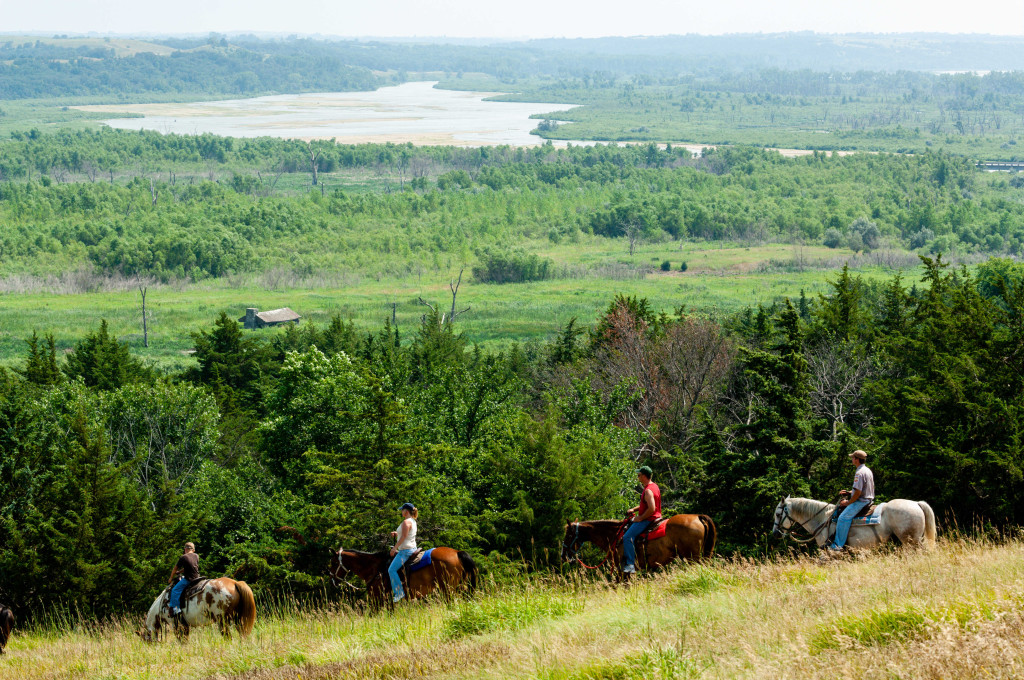
I wish I had made that hike sooner. Much sooner. And I wish I would’ve seen that shelter, and the park, in its heyday, so I could truly appreciate why the locals continue to have such fond memories of the place once known as Niobrara Island.
The post The Last Relic appeared first on Nebraskaland Magazine.
















